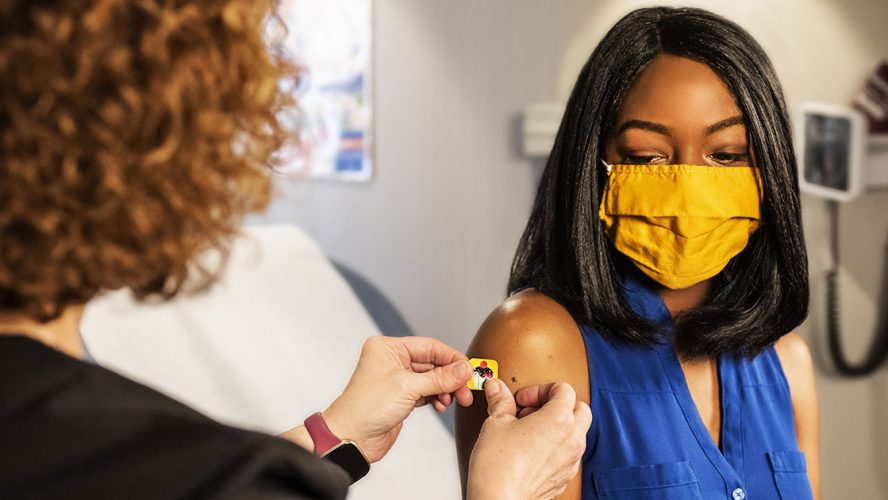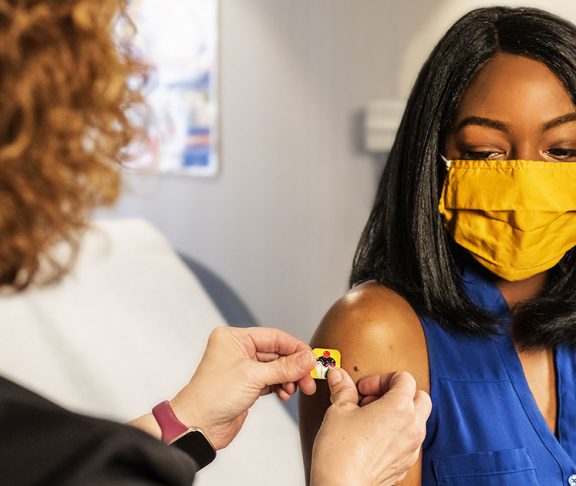The widespread availability of COVID vaccination data in the United States represents a major achievement, marking significant progress in America’s ability to produce COVID data that is both comprehensive and accurate. Today, all 50 states release state-level data on the number of people who have been vaccinated. For each state, we can also access this data at the county level.
However, it remains difficult to fully understand the extent to which COVID vaccines are reaching some of our nation’s most vulnerable groups. Surgo Ventures’ COVID-19 Vaccine Coverage Index (CVAC), which identifies which states and counties are facing greater barriers to reaching rapid, widespread vaccination coverage, has found that racial and ethnic minority populations are more likely to live in areas of greater concern.
For these areas, local policies that address underlying community-level challenges to increase vaccine confidence and access are key to increasing vaccination rates. But a lack of comprehensive government data on vaccination rates by race and ethnicity has made it difficult to understand which places — and therefore which policies and interventions — have been most or least successful in reaching these groups.
A community of 6,340,388 people (and counting) tracking local COVID-19 and flu outbreaks.
The CDC tracks COVID vaccinations by race and ethnicity at the national level, and the Kaiser Family Foundation (KFF) tracks this information at the state level. According to KFF, 47 states and the District of Columbia report this information (as of May 17, 2021.) But the number of states reporting vaccinations by race and ethnicity at the county level is much lower, and there is no single source to easily access and compare this information.
Greater insight into the vaccination rollout at the local level is essential for developing data-driven policies that successfully increase vaccinations among vulnerable groups. Ultimately, success in reaching these groups translates into a United States vaccine rollout that is both faster and more equitable. It also means that we can more effectively stop the spread of COVID, save lives, and safely return to the activities we love most.
Surgo’s COVID-19 Vaccine Coverage Index (CVAC) takes advantage of existing data to identify where and why certain communities may be at higher risk for under-vaccination. But as the vaccine rollout moves forward, different states have already implemented a variety of measures to address this risk, which the CVAC does not automatically account for.
Here’s how more data can help:
- If every state releases local vaccine demographic data, we can achieve a more complete picture of the effectiveness of the current COVID vaccine rollout across the country. It’s harder to address issues around vaccine equity without a more complete picture of where vaccines are being administered and who is receiving them. A lack of data obscures which states and counties are doing well and which ones are not. Having this data for every state will help us to begin to identify trends and ask the right questions, including: Is vaccine inequity a local, state, or national issue? Have certain places been more successful than others in reaching some of their most vulnerable populations? If so, how can others adapt these successful strategies to meet their own distinct needs?
- This demographic data can allow us to strategize the distribution of vaccines more effectively, especially at the local level. Vaccine administration happens locally, whether at your doctor’s office, pharmacy, or a mass vaccination site. Therefore, vaccine demographic data is especially useful at the county level. Seeing which specific communities are struggling the most to get vaccinated will enable us to take more targeted steps towards vaccinating these groups. That may entail community-specific messaging, a more straightforward sign-up process, free transportation to vaccination sites, and more.
- Vaccine demographic data will allow us to measure how well these strategies reduce inequities. As vaccine supply increases and vaccine holdouts remain across the country, states will need to continue to develop effective strategies for reaching those people. Tracking the equity of this distribution over time will allow us to see which states are the most successful in taking steps to reach all individuals.
See COVID-19 and Flu outbreaks in your community, today.!
The hardest-hit communities
According to a KFF report, across the United States, white individuals are 1.5 times more likely to be vaccinated than Black individuals and 1.4 times more likely than Hispanic individuals, relative to each group’s share of the total population. (Data is current as of May 17, 2021; note that some states are excluded from the analysis due to lack of data or differences in the way data is reported.)
This pattern, where persons of color are vaccinated at much lower rates than non-Hispanic whites, is largely consistent across the U.S. However, the contrast is especially stark in a few states. For example, the KFF report found that white people were more than 2.5 times as likely to be vaccinated as Black people in Hawaii and South Dakota. Furthermore, whites were at least twice as likely to be vaccinated as Hispanics in Arizona, Colorado, and South Dakota.
Taking action
With the right steps, the United States can implement a fast and equitable rollout on a state basis.
According to the KFF report, there is a small but growing number of states where vaccination rates among Black or Hispanic individuals are relatively proportionate to their shares of cases, deaths, and/or total population. For example, Hispanic individuals make up 10 percent of the population in Virginia, and as of May 17, 2021, have received around 13 percent of total vaccinations in the state. Meanwhile, Virginia’s rollout has also been relatively fast; it is ahead of more than two-thirds of U.S. states in giving its residents at least one vaccine dose.
Moving forward, all states can develop strategies for COVID vaccine rollouts that are faster and more equitable. By collecting and reporting more comprehensive vaccination data at the state and especially county levels, governments can increase accountability and build better insights into vaccine penetration. Additionally, if these governments take steps to guarantee the security and privacy of the information collected, more people will be willing to share their demographic details.
Ending the pandemic means reaching Americans of all backgrounds with COVID vaccines. With citizen advocacy and government action, we can have more widespread vaccine demographic data. With more data, we can achieve better rollouts through data-driven policies that build greater vaccine confidence and increase uptake.


